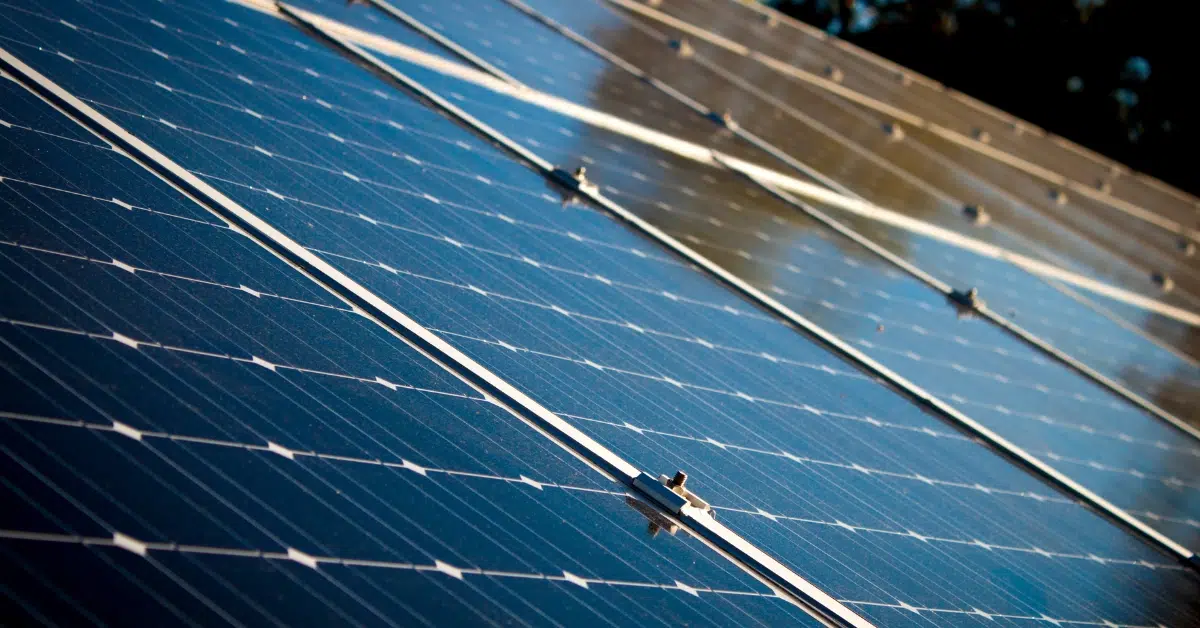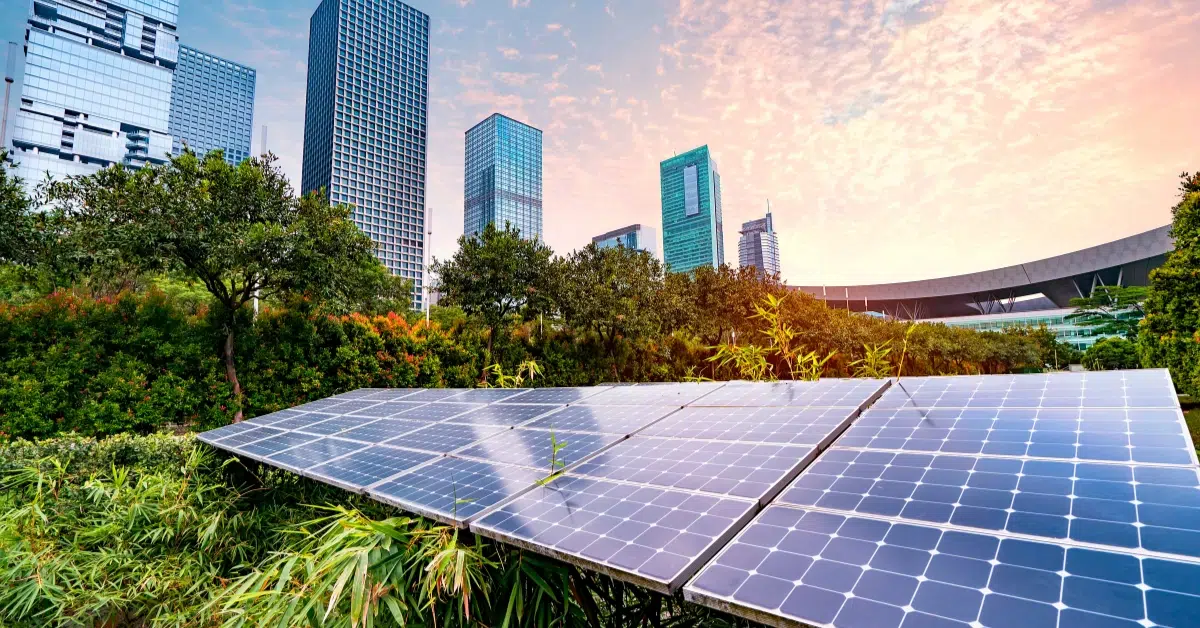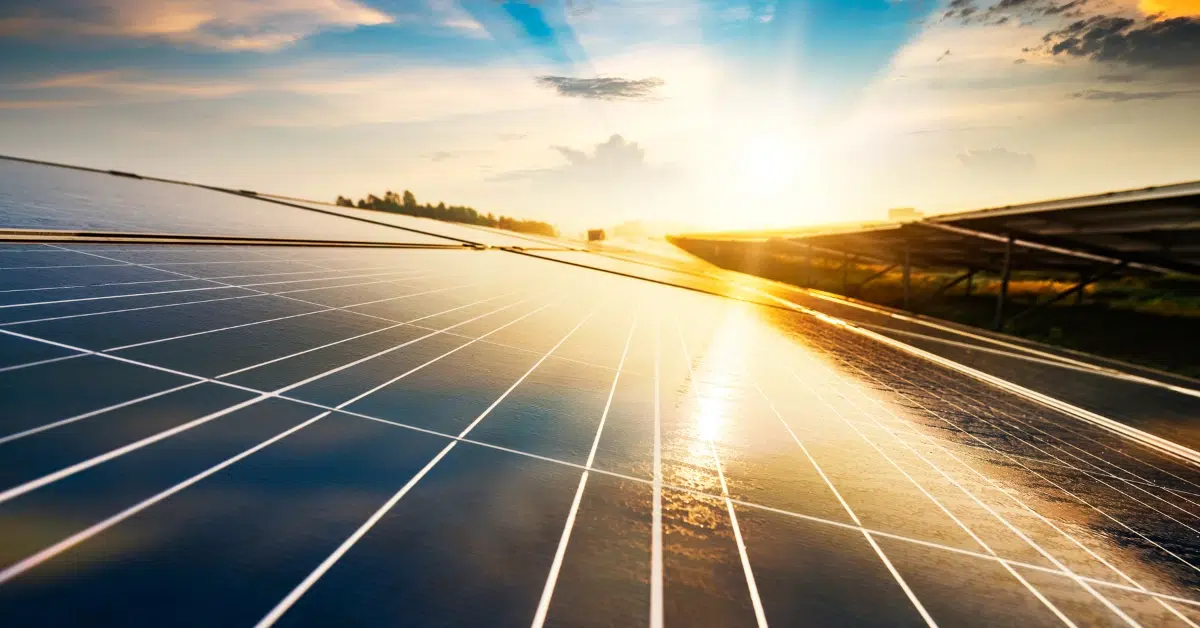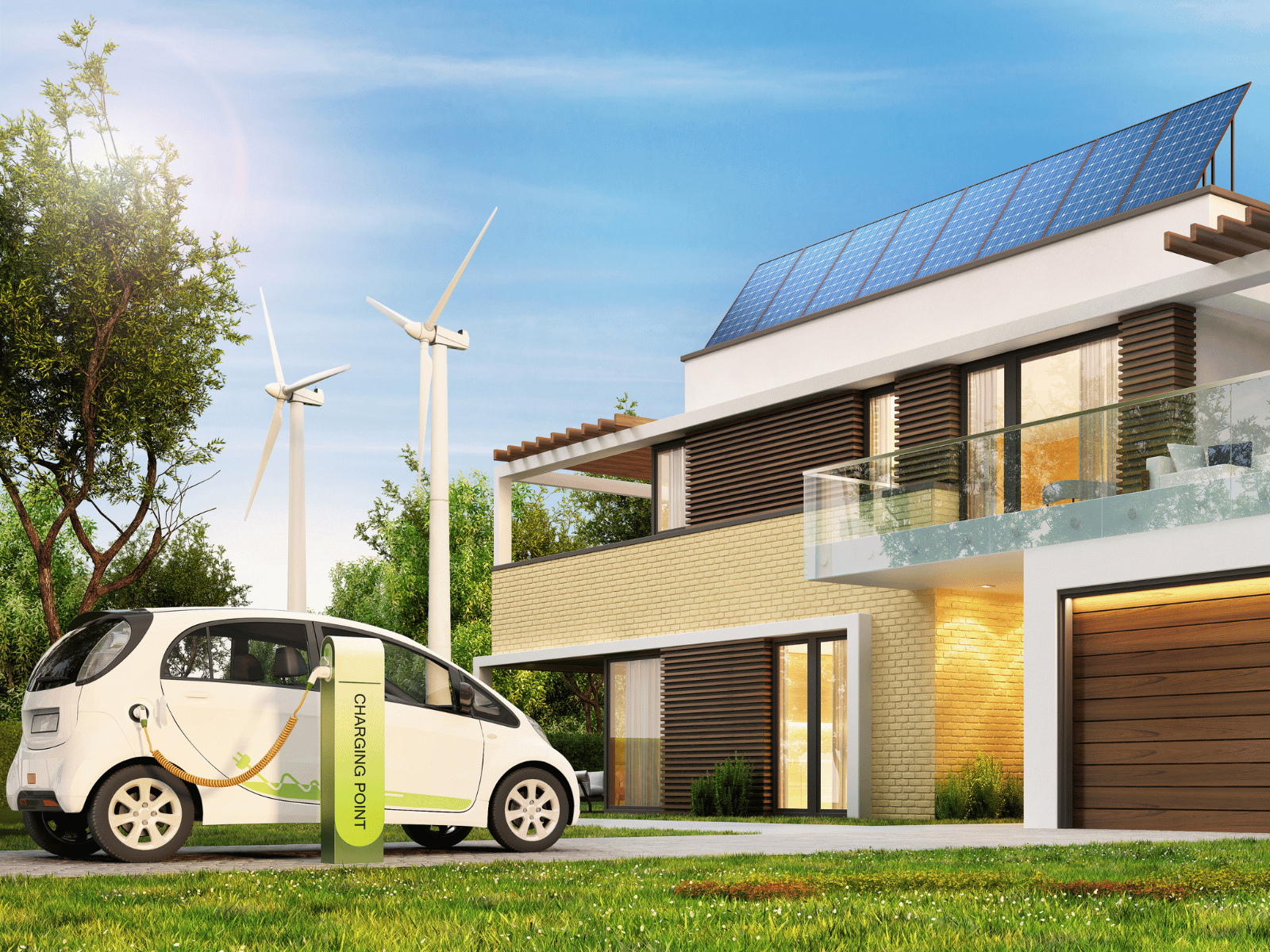Introduction to Solar Cleaning
The past few years have seen a marked increase in the use of solar energy to power homes and businesses, and as a result, we have become more aware of the need for solar panel cleaning. If your solar panels are not properly maintained, your solar energy production can be affected. This is why it is important to pay attention to how weather conditions affect solar panels and how you can clean them to maximize their efficiency. In this blog, we will discuss the importance of solar cleaning, considering the role of weather conditions in doing so. We will look at the necessary steps to take and the products to use to clean our solar equipment and keep it running efficiently. Solar cleaning is a key factor in keeping our solar energy production running at its best.
Why Solar Panel Cleaning is Important
Solar panel cleaning is an important part of maintaining the efficiency of solar panel systems. Poor solar panel performance is often caused by dirt and debris blocking access to sunlight, which in turn reduces the energy production potential of the system. Not only does cleaning ensure that the solar panel system performs optimally, but it also helps prolong the life of the solar panels. In addition to the problems dirt and debris can cause, weather conditions can also play a role in solar panel performance, and therefore, solar panel cleaning is essential. Regular cleaning should be done to ensure that the solar panels are working optimally in all weather conditions.
Types of Weather That Impact Solar Panels
Temperature
Temperature is an incredibly important factor when it comes to cleaning solar panels. Not only is it a measure of how hot the external environment is, but it also affects the rate of accumulation of dust, dirt, and grime. As the temperature increases, the accumulation of dirt increases, and so too does the duration for which it stays on solar panels. This is due to warmer temperatures increasing air pressure and winds, both of which can cause all manner of dirt and dust to become airborne and deposited on solar panels. Additionally, high temperatures can contribute to the melting of any debris, forming a sticky residue on the surface and making it more difficult to clean. To ensure the optimal performance of a solar panel, it is important to not only monitor the buildup of dust, dirt, and grime but also to take into account the conditions of outdoor temperatures when cleaning.
Harnessing the sun’s energy through solar panels is a remarkable feat of modern technology, yet the efficiency of these panels is intricately tied to the temperature at which they operate. Let’s look at the interplay between temperature and solar panel efficiency, exploring how varying temperatures can influence energy production.
Understanding the Temperature Sensitivity of Photovoltaic Cells
Solar panels operate using photovoltaic cells, which convert sunlight into electricity. These cells are temperature-sensitive, and their efficiency is influenced by the temperature of the surroundings. Counterintuitively, the relationship is not a linear one, and understanding this non-linear dynamic is crucial for optimizing energy production.
Ideal Temperatures for Solar Panels: The Goldilocks Zone
Solar panels perform optimally within a specific temperature range known as the “Goldilocks zone.” This zone varies slightly depending on the type of solar panel, but as a general rule, temperatures around 25 to 35 degrees Celsius (77 to 95 degrees Fahrenheit) are considered ideal. Within this range, the efficiency of photovoltaic cells is at its highest.
Heat and Efficiency: The Curious Case of Declining Performance
While moderate heat is beneficial, excessive temperatures can lead to a decline in solar panel efficiency. As the temperature rises, the efficiency of the photovoltaic cells decreases. This decline is mainly attributed to the increased movement of electrons and the heightened resistance within the solar cell materials, resulting in a less effective conversion of sunlight into electricity.
Cold Temperatures and Winter Challenges
Conversely, cold temperatures, especially during winter, can also impact solar panel performance. Low temperatures increase the resistance in the electrical circuits, reducing the flow of electricity. Additionally, snow accumulation on the panels can obstruct sunlight absorption. However, advancements in technology and tilt mounting systems have helped mitigate some of the challenges posed by cold weather.
Innovations in Thermal Management
Researchers and engineers are continually developing innovative solutions to counteract the impact of temperature on solar panels. This includes improved materials that are less affected by temperature variations, as well as advanced thermal management systems to regulate the temperature of the panels actively.
Rainfall
Solar panels, renowned for their ability to convert sunlight into electricity, face a unique set of challenges when it comes to rainfall. Here, we’ll look at the impact of rainfall on solar panels, examining how this natural occurrence affects both their efficiency and energy production.
The Cleansing Effect: Rainfall as a Natural Cleaner
Rainfall, in moderation, can be a natural blessing for solar panels. It acts as a cleansing agent, washing away dust, pollen, and other debris that may accumulate on the panel surface. This initial rinse can enhance the panels’ ability to absorb sunlight and, subsequently, improve their efficiency.
The Paradox of Heavy Rain: Balancing Benefits and Drawbacks
While light to moderate rain is generally beneficial, heavy rainfall can pose challenges to solar panels. Raindrops can leave behind mineral deposits and small particles, especially in regions with hard water. Over time, these deposits can accumulate, potentially diminishing the transparency of the panel and impacting its ability to capture sunlight.
Hydrophobic Coatings: A Shield Against Water-Induced Challenges
In response to the challenges posed by heavy rainfall, researchers and manufacturers have explored hydrophobic coatings for solar panels. These coatings repel water, minimizing the adhesion of mineral deposits and particles. Implementing hydrophobic technologies can extend the time between cleanings and enhance the overall performance of solar panels in rainy environments.
Monitoring Rainfall Impact on Energy Production
Understanding the correlation between rainfall and energy production is crucial for solar panel owners. Rainfall data can be analyzed alongside energy production records to identify trends and patterns. This information is valuable for adjusting expectations, optimizing maintenance schedules, and planning for potential efficiency fluctuations during rainy seasons.
Dust Storms and Dry Periods
Dust storms and dry periods are two types of weather conditions that can significantly impact the quality of solar panel performance.
How Dust Affects Solar Panel Efficiency
Dust storms, common in arid regions, can coat solar panels with layers of fine particles, hindering their ability to absorb sunlight. The accumulation of dust on the panel surface creates a barrier, reducing the intensity of sunlight reaching the photovoltaic cells. This diminished light absorption directly translates to a decrease in energy production.
Dry Spells and Dust: A Double Whammy for Solar Panel Performance
Dry periods exacerbate the impact of dust on solar panels. Without regular rainfall to naturally cleanse the panels, the accumulation of dust becomes more pronounced. This underscores the importance of proactive maintenance measures in regions where dry spells are prevalent.
Learn more about the science behind how dust impacts solar panels and their efficiency.
Strategies for Mitigation: Regular Cleaning and Coatings
Given the challenges posed by dust storms and dry periods, a proactive approach to cleaning becomes paramount. Regular cleaning schedules adapted to the local climate can help mitigate the impact of dust accumulation. Additionally, the application of anti-soiling coatings—designed to repel dust and reduce adhesion—can be a valuable investment to maintain optimal solar panel system efficiency.
Tilt and Design: Engineering Solutions for Dust Resilience
The design of solar panels, including their tilt and structure, plays a crucial role in minimizing the impact of dust storms. Proper tilting allows dust to be naturally shed during wind or rain, reducing the need for frequent manual cleaning. Ongoing advancements in panel design focus on enhancing resilience to dusty environments, ensuring panels can continue to function efficiently.
Snowfall
As winter blankets landscapes in snow, solar panels face a unique set of challenges that can influence their efficiency and energy production. We’ll explore the delicate dance between snowfall and solar panels, shedding light on the measures needed to ensure optimal performance during the winter months.
Snow Blankets and Sunlight Blockades: The Challenge of Reduced Irradiance
Snow that covers solar panels is a picturesque scene, but it poses a direct challenge to their functionality. The accumulation of snow on the panel surface obstructs sunlight, reducing the irradiance reaching the photovoltaic cells. Lower irradiance translates to decreased energy production, making it crucial to address snow buildup promptly.
Clearing the Path: Strategies for Snow Removal
Efficient snow removal is essential for maintaining solar panel performance in snowy climates. Manual removal using soft tools, such as a snow rake, or automated systems integrated into the panel design can effectively clear snow without damaging the panels. Swift removal ensures that sunlight can once again reach the cells, allowing the system to resume optimal energy production.
Tilt Matters: The Role of Panel Orientation in Snow Shedding
The tilt of solar panels plays a significant role in how they interact with snow. Panels tilted at an angle can facilitate the natural shedding of snow, aided by gravity and wind. Properly designed mounting systems consider the local climate, optimizing the tilt to balance snow shedding with the need to capture sunlight during less snowy periods.
Snow’s Insulating Effect: Balancing Benefits and Drawbacks
While snow can act as an insulator, helping to maintain a more stable temperature for solar panels, it also poses challenges. Excessive snow accumulation can lead to prolonged shading and increased weight on the panels. Careful consideration of local climate conditions and innovative designs that account for these factors are crucial for striking the right balance.
The Impact of Freezing Temperatures on Panel Components
Snowfall often accompanies freezing temperatures, which can affect the performance of solar panels. Sub-zero temperatures can cause the contraction of materials, potentially leading to micro-cracks or damage. Ensuring that solar panels are designed and maintained to withstand freezing conditions is vital for long-term durability and efficiency.
Emerging Technologies: Anti-Snow Coatings and Thermal Solutions
Innovations in technology continue to address the challenges posed by snowfall. Anti-snow coatings, designed to repel or reduce snow adhesion, are being explored to minimize the need for manual snow removal. Additionally, thermal solutions, such as embedded heating elements, can assist in the controlled melting of snow, allowing for a more automated and efficient approach to snow management.
Humidity, Mold, and Mildew
Humidity and mold can detrimentally affect solar panels due to the moisture in the air. High levels of humidity provide ideal conditions for mold and mildew to form on and around the surface of solar panel modules. The spores can adhere to the front and rear surfaces of the panels and prevent the solar cells from capturing sunlight. This can lower your solar system’s performance and reduce the amount of power you generate. Therefore, it is important to pay close attention to the weather conditions to ensure that you are proactively cleaning your solar panels and prevent this issue from worsening.
Wind
Wind is one of the environmental factors that can have an impact on a solar panel’s performance. While wind itself doesn’t have a direct environmental effect on the cleaning process, dust, debris, and other particles carried by the wind can accumulate on a solar panel, significantly reducing its efficiency. Wind can also increase the likelihood of moisture and other pollutants, which can harm photovoltaic cell performance. Cleaning solar panels during windy conditions requires extra attention and additional tools to ensure that all the dust and debris are safely removed.
The Gentle Breeze: Cooling Solar Panels for Optimal Performance
Moderate wind can play a beneficial role in maintaining the efficiency of solar panels. Wind helps dissipate heat generated during the solar energy conversion process, preventing the panels from overheating. This natural cooling effect contributes to maintaining the optimal operating temperature, allowing the photovoltaic cells to function more efficiently.
Dust and Debris: Wind’s Double-Edged Sword
While wind can aid in keeping solar panels clean by reducing the accumulation of dust and debris, it also poses a risk of abrasion. Dust particles carried by the wind can act as abrasive agents, potentially scratching the surface of the solar panels over time. The balance between the cleaning benefits and the risk of abrasion requires careful consideration in windy environments.
High Winds and Structural Considerations
In regions prone to high winds, the structural integrity of solar panel installations becomes crucial. Proper mounting and anchoring systems must be in place to withstand the force of strong gusts. Ensuring that panels are securely fastened reduces the risk of damage and ensures the longevity of the solar energy system.
Turbulence and Wind-Induced Vibrations: Impact on Longevity
Wind-induced vibrations, especially in turbulent conditions, can have long-term effects on the mechanical components of solar panels. Over time, these vibrations may contribute to wear and tear, potentially affecting the performance and lifespan of the system. Engineering designs that account for wind dynamics are essential to mitigate these challenges.
Tilt and Aerodynamics: Designing for Wind Efficiency
The tilt of solar panels and their aerodynamic design are critical factors in optimizing their performance in windy conditions. Panels tilted at an angle can reduce wind resistance, minimizing the force exerted on the structure. Strategic design considerations can enhance the system’s ability to harness wind for cooling while minimizing the risk of damage.
The Role of Wind in Cleaning and Maintenance
In windy environments, the need for manual cleaning may be reduced due to the natural cleaning effect of wind-driven rain. Understanding the local wind patterns and their influence on cleaning can inform maintenance schedules. However, it’s essential to strike a balance, as high winds may also carry abrasive particles that pose a risk to the panel surface.
Emerging Technologies: Wind-Adaptive Systems
Advancements in technology are introducing wind-adaptive systems that can respond dynamically to changing wind conditions. These systems may include automated tilting mechanisms that adjust the angle of solar panels based on wind speed, optimizing their orientation for maximum efficiency while minimizing wind-induced stress.
How to Adapt Cleaning Schedules Based On Seasonal Considerations
Regularly cleaning your solar panels is essential to ensure a long lifespan, optimal efficiency, and performance. Unfortunately, the weather conditions in your area can make it difficult to effectively clean your solar panels. Each season brings constantly changing weather elements that can impact how you clean your panels, so it’s important to adjust your cleaning methods, supplies, or schedules based on the time of year. During colder months, you should clean panels less frequently due to ice and snow risk on the panel surfaces. Additionally, during periods of high rain or winds, it’s wise to avoid cleaning as dirt can be quickly washed away naturally by the rain. Also, you should be mindful that humidity can affect cleaning, and make sure that the solar panels have time to dry out after a rain before beginning the cleaning process. Taking seasonal weather elements into consideration will help you form an effective, efficient solar panel cleaning routine.
Benefits of Regular Cleaning
Solar panel cleaning is essential to maximize the efficiency of solar energy systems. It’s important to clean solar panels regularly to remove built-up dust, dirt, and bird droppings that can block direct sunlight and reduce the panel’s efficiency. Additionally, regular cleaning helps prevent the accumulation of debris that may eventually cause damage to the panels. Cleaning solar panels regularly also helps to maintain peak performance and ensure that your solar energy system is operating at its maximum capacity. Taking the time to clean your solar panels not only increases panel efficiency but can also help preserve the lifespan of your panels, allowing them to produce their optimal amount of energy over a longer period. Learn more about the benefits of solar panel cleaning.
Conclusion
In conclusion, when dealing with solar panel cleaning, it’s important to consider the weather conditions. Different conditions will require specific approaches and often a specialized cleaner to ensure your panels remain functioning well. Keeping your panels clean will help you make the most of your solar energy, so don’t underestimate the role of the weather when it comes to this important part of your energy efficiency routine.






